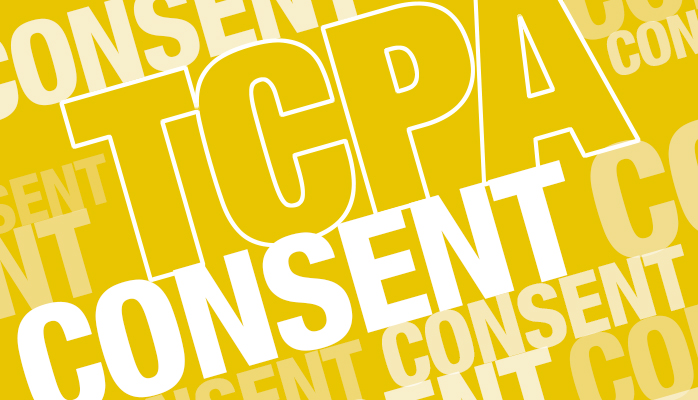TCPA – Prior Express Consent for Text Message Marketing

According to the statutes of the Telephone Consumer Protection Act (TCPA) enacted in 1991, before a corporate organization or a brand can send text messages to consumers or recipients for advertising or marketing purposes, prior consent of the concerned recipients must be sought by the brand to protect the privacy of the consumer. The TCPA actually helps brands and independent marketers in a way. By complying with the TCPA’s regulations, the brands would actually be communicating with only people who are interested in their services. With this, it means that the brands can reach a better quality target audience, and minimize running costs.
If the TCPA’s principal regulation of seeking the recipient’s prior consent before enrolling him in a text message marketing campaign is contravened, the aggrieved recipient has the power to drag the erring brand to court. If the brand cannot produce substantial evidence to prove that the recipient consented to the text message marketing campaign they enrolled him in, then the brand is liable to pay statutory damages to the tune of $500 to $1500 per text message sent. In some cases, the recipient sends a demand letter to the erring brand, and the matter is settled out of the courts, usually with the erring brand paying the aggrieved recipient a mutually-agreed upon sum of money as compensation.
In some other cases, however, the aggrieved recipient may team up against the violating company with a league of other aggrieved consumers and file a class action case against the erring company. If the company is found guilty, they may be liable to millions of dollars in statutory damages payments. It should be noted that in the event of a TCPA violation, agencies such as the FCC, FTC and the State Attorney General’s office may actually come after an offending brand.
Apart from the TCPA, some other regulatory mechanisms are in place in the field of digital marketing to ensure the protection of people’s privacy. The CTIA is the trade union that serves as the official mouthpiece of the wireless carriers like AT&T, Sprint, T-mobile, and Verizon. The CTIA sets in place guidelines which must be obeyed by brands that market their products through a text message marketing campaign. Normally, according to the laws of the United States, it is compulsory for any brand interested in advertising through text messaging means to apply for and acquire a shortcode which must be approved by all the wireless carriers. If a brand violates its guidelines, the CTIA may suspend its shortcode after an audit. It should be noted however that violation of the CTIA’s guidelines cannot lead to court action.
At this point, it is crystal clear that it is very essential for brands to gain the express written consent of potential text message recipients before actually sending them marketing text messages. How then can a brand actually gain the written consents of thousands of potential recipients before bombarding them with recurrent text messages?
When the term “written consent” is used, one might be tempted to think of the consent strictly regarding putting pen to paper and signing a physical agreement. In the early days of the TCPA, this was actually the norm, and it was a very rigorous process. Imagine a brand having to prepare thousands of copies of a consent agreement and having to get all of their potential recipients to sign these documents. It was a terribly exhausting process, both for the brands and its consumers.
Luckily, putting pen to paper to get consent in the form of individual signatures just to get people’s consent before launching a text message marketing campaign is fast becoming a thing of the past, as faster and more convenient digital methods of acquiring consent have been developed. Apart from the fact that these new digital methods are more convenient and less time consuming both for the brand and its consumers, it also enables the brand to store their records of garnered consents in an organized electronic form for easy retrieval when needed. The practice of using digital means to garner consent also makes it very easy for the brand to gather as many consents from as many interested people as possible within the shortest possible time.
The most common digital means of giving consent in the modern day digital marketing world is the texting of a string of letters or numbers to a short code, enabling a recipient to opt-in to a digital marketing campaign. When the recipient wishes to opt-out of the campaign, he can simply text another specified code designated for opting out. It is also possible for a potential recipient to consent to receive recurrent text messages on a website by filling out an online registration form and putting his phone number. Before a customer gives his consent, the description of the product must be made known to him. He must know if message and data rates would apply when he receives the messages; he must be aware of attached terms and conditions and Privacy policy; and he must know how frequently he would.
(Inspired by Tatango)
